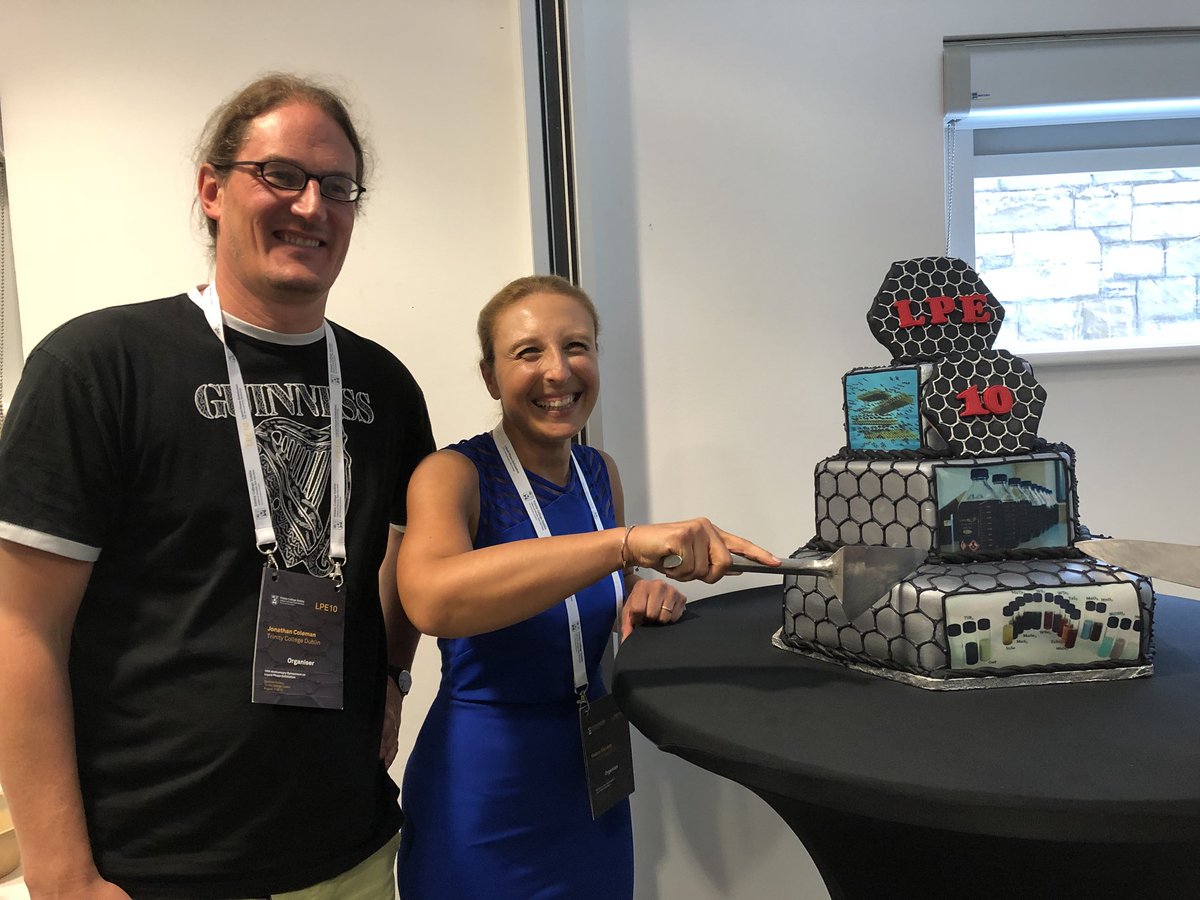Last month, Trinity’s Advanced Materials and Bio-Engineering Research Centre (AMBER) celebrated ten years of graphene production. AMBER hosted leading international experts in materials science at a workshop in the Science Gallery. The workshop marked the 10th anniversary of the first publication of the Liquid Phase Exfoliation (LPE) technique, pioneered by Trinity’s own professors Jonathan Coleman and Valeria Nicolosi, and described a new method to produce defect-free graphene nanosheets.
“The workshop marked the tenth anniversary of the first publication of the Liquid Phase Exfoliation (LPE) technique, pioneered by Trinity’s own professors Jonathan Coleman and Valeria Nicolosi.”
Because of its exceptional properties, graphene is a material with a multitude of potential applications, ranging from biological engineering to optical electronics and energy storage. Traditional methods of obtaining graphene from graphite involved dissecting the raw material layer by layer, until a single layer remained, in a process known as mechanical exfoliation. This method proved to be both costly and ineffective at producing quality, defect-free graphene.
The process of LPE made the large-scale production of graphene possible, through the dispersion and exfoliation of graphite in organic solvents. Energy is supplied, causing the particles to displace, and the layers of a material to separate into individual mono layers, which is stabilised in the liquid. The result was pure graphene nanosheets in liquids.
Since LPE was pioneered ten years ago, it has gone from strength to strength. In 2014, AMBER collaborated with English chemical manufacturing company, Thomas Swan & Co. Ltd. A research team led by Professor Coleman set to develop a technique to produce industrial levels of graphene at high quality. Following the collaboration between the research group and Thomas Swan Ltd., the exfoliated graphene product is now available on the market, and trading under the name Elicarb.
The ability to produce affordable graphene at industry level means that many of the 2D materials envisioned in the lab can become available commercially. The remarkable properties of graphene can be seen in products that people use everyday. For example, graphene is currently being used as an additive in industrial products to reinforce the mechanical performances. The tennis racket used by Novak Djokovic has graphene incorporated into its structure.
“The ability to produce affordable graphene at industry level means that many of the 2D materials envisioned in the lab can become available commercially.”
What can be done with graphene and nanomaterials is an ever-growing list, and much of that is accomplished at AMBER at Trinity. A study lead by AMBER researchers in the Royal College of Surgeons in Ireland (RCSI) resulted in the development of a new biomaterial composed of collagen and pristine graphene. The new biomaterial is capable of regenerating tissues which respond to electrical stimuli and eliminate infection. Previous biomaterials have displayed conductivity values which were less than the body’s own tissue. Unlike previous biomaterials, the pristine graphene obtained by LPE showed conductivity levels which were capable of matching the native tissue, or in some cases, surpassing it. This means it can potentially be used in the future for repairing nerve damage in patients of heart attacks and burns. Today, treating areas affected by nerve damage extends only to spaces of two centimetres. The conducting properties of graphene mean that transmission of electrical signals across affected areas, and full restoration of the nerve damage, may be possible in future applications of this biomaterial.
Additionally, the biohybrid material has been shown to eliminate infection. Its surface roughness prevents the attachment of bacteria, making it an attractive material in the production of medical devices, which is one of the four primary industry sectors of AMBER.
Nokia Bell Labs, an industrial research and scientific development company, is another collaborating partner of AMBER that is tapping into the potential of nanomaterials. The energy storage potential of 2D materials is being explored by Nokia Bell Labs and AMBER, with Professor Coleman and Professor Nicolosi, to develop long life batteries.
With the movement towards renewable energy, such as solar power and wind power, viable energy storage methods have become increasingly necessary. In an interview on Newstalk’s Futureproof with Jonathan McCrea, Professor Nicolosi explained the inefficiency of batteries being used today, noting that a battery “the size of Dublin Council” would be needed to supply just eight hours of energy for the population of Dublin. The strength and large surface area of 2D nanomaterials are being exploited to create batteries which are both stronger, and have greater energy storage potential, than traditional batteries.
The future of graphene remains bright. According to Professors Coleman and Nicolosi, some of the potential paths for graphene and nanotechnology include low cost printable electronics, supercapacitors, and using nano materials to produce medical devices such as pacemakers. Speaking to Trinity News, Professor Nicolosi explained that AMBER is aiming to target applications where graphene and two-dimensional nanomaterial inks can be printed via inkjet or by 3D printing into energy storage devices and printers. “Devices not only will be more efficient and long lasting, but will most importantly be customisable in terms of their morphology, shape, composition,” she said.
“Devices not only will be more efficient and long lasting, but will most importantly be customisable in terms of their morphology, shape, composition.”
Graphene is a relatively novel material, but if the work that has been accomplished at AMBER in the last ten years is anything to go by, we can expect many more exciting developments.






